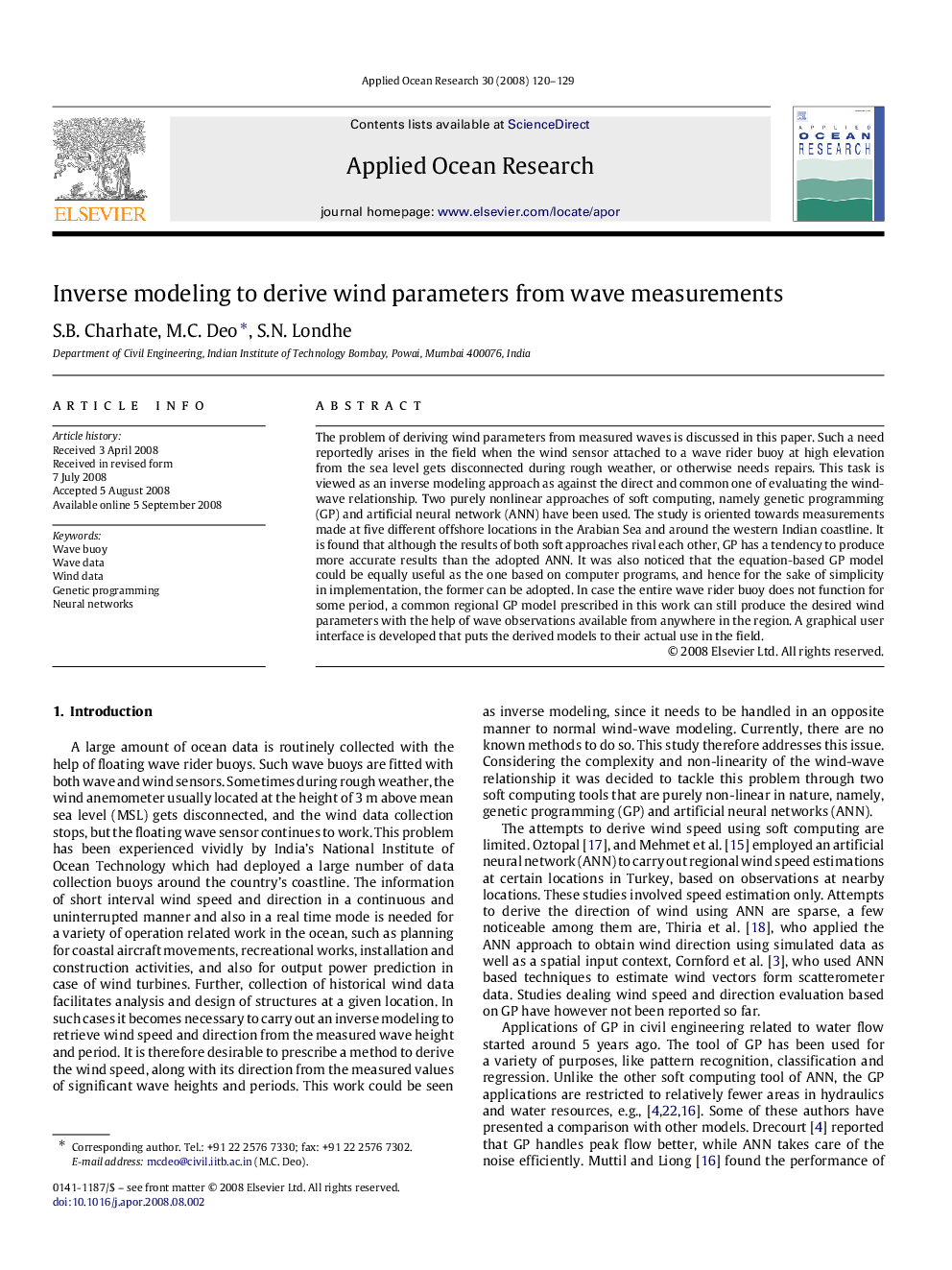| Article ID | Journal | Published Year | Pages | File Type |
|---|---|---|---|---|
| 1720454 | Applied Ocean Research | 2008 | 10 Pages |
Abstract
The problem of deriving wind parameters from measured waves is discussed in this paper. Such a need reportedly arises in the field when the wind sensor attached to a wave rider buoy at high elevation from the sea level gets disconnected during rough weather, or otherwise needs repairs. This task is viewed as an inverse modeling approach as against the direct and common one of evaluating the wind-wave relationship. Two purely nonlinear approaches of soft computing, namely genetic programming (GP) and artificial neural network (ANN) have been used. The study is oriented towards measurements made at five different offshore locations in the Arabian Sea and around the western Indian coastline. It is found that although the results of both soft approaches rival each other, GP has a tendency to produce more accurate results than the adopted ANN. It was also noticed that the equation-based GP model could be equally useful as the one based on computer programs, and hence for the sake of simplicity in implementation, the former can be adopted. In case the entire wave rider buoy does not function for some period, a common regional GP model prescribed in this work can still produce the desired wind parameters with the help of wave observations available from anywhere in the region. A graphical user interface is developed that puts the derived models to their actual use in the field.
Related Topics
Physical Sciences and Engineering
Engineering
Ocean Engineering
Authors
S.B. Charhate, M.C. Deo, S.N. Londhe,
